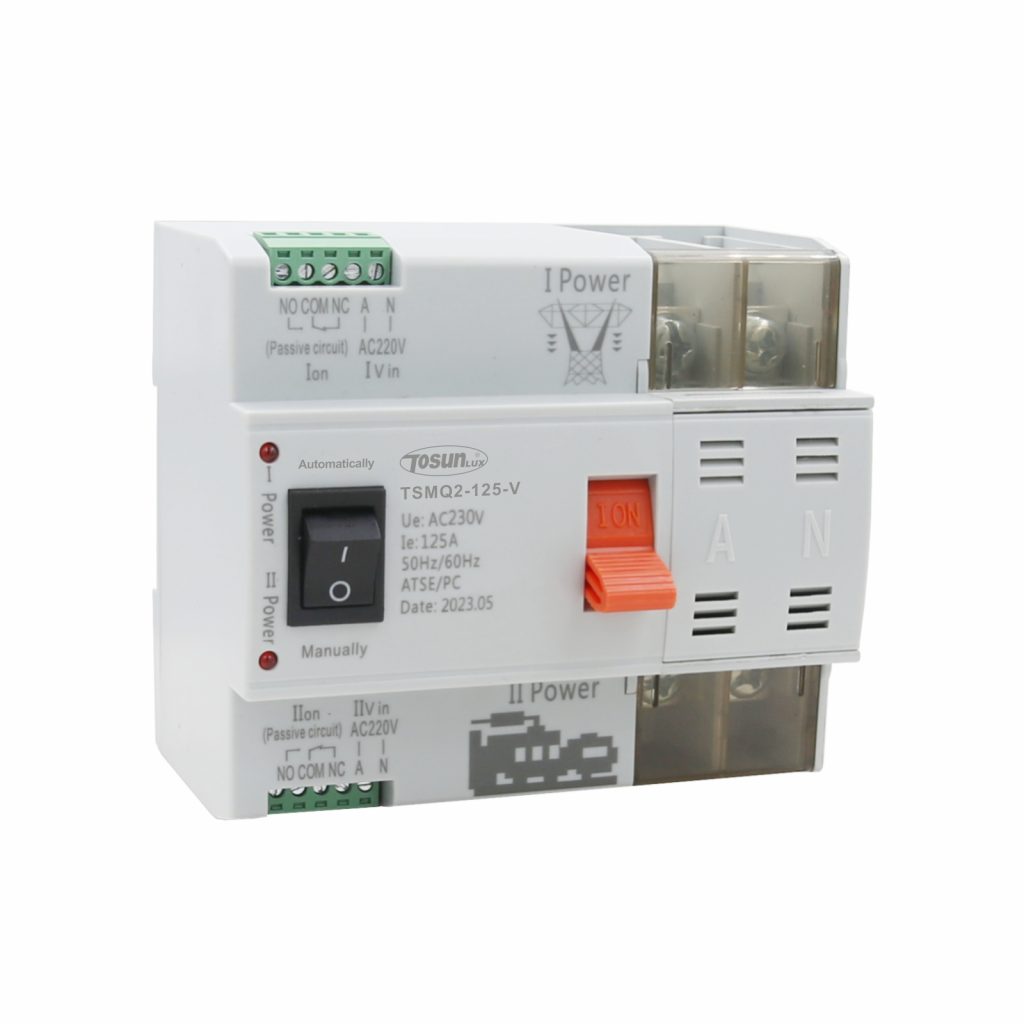Manual vs. Automatic Transfer Switches
Table of Contents
ToggleImagine you are working from home. It’s raining heavily and all of a sudden there’s a loud lightning strike. Everything went dark instantly. Your PC suddenly shut down. The wifi is gone. But you are not yet done with your work and you have to submit your output on time.
This is where transfer switches come in. For most of us, we cannot afford to lose electricity since our comfort and work rely heavily on it. A transfer switch is a device used to change the power source from the main supply to a backup one. Without a transfer switch, it would be too much of a hassle to connect a secondary power supply to another source.
There are two types of transfer switches: manual transfer switches and automatic transfer switches. In this article, you will learn about the difference between the two, which one to choose for your electric system, and the factors to consider in buying one.
Understanding Manual Transfer Switches
Advantages
- Lower initial cost
Manual transfer switches have lower production and installation costs. It can be good if you have a tight budget.
- Ease of installation
Manual transfer switches require fewer wires, making it easier to install them.
- Greater control
Manual transfer switches allow you to control the electrical system on your own. This is helpful when you want to control only a portion of the system or if you don’t want to use your backup power all the time whenever there is an interruption.
Disadvantages
- Takes more time to operate
With a manual transfer switch, more time is needed to connect to a backup power source. This ultimately leads to longer downtime at your home or business during power interruption.
- Needs a skilled operator to work
To operate a manual transfer switch properly and safely, you need a skilled person. This means that manual transfer switches are dependent on the availability of this person.
- Limited capacity
Manual transfer switches can only handle a limited amount of circuits, making them unsuitable for larger settings such as businesses and industrial systems.
Understanding Automatic Transfer Switches

Advantages
- Can operate automatically
The ability of automatic transfer switches to operate automatically makes it more convenient and efficient in most cases.
- Operates faster
An automatic transfer switch can instantly connect to your backup power source without any human intervention, making it faster to operate.
- Greater capacity
Due to their ability to connect to two unsynchronized power sources, automatic transfer switches can handle increased voltages. This makes them capable of being used for larger operations such as businesses where an uninterrupted power supply is crucial.
Disadvantages
- Higher initial cost
Automatic transfer switches have a more complex design and additional functionalities. This makes it more expensive to produce them than manual transfer switches.
- May waste some energy
There’s a caveat to the automatic capability of automatic transfer switches: It may occasionally detect false signals which may lead to wasted generator power.
Key considerations in choosing a manual or automatic transfer switch
- Size of the electrical system
The size of your electrical system primarily dictates which type of transfer switch you should use. It wouldn’t be safe to use either a manual transfer switch for larger systems or an automatic transfer switch for smaller systems.
- Availability of a skilled operator
A manual transfer switch would be useless without an available skilled operator.
- Budget
Budget should be the last of all considerations, but is still an important factor, nonetheless. Manual transfer switches are less expensive than automatic transfer switches.
In summary, manual transfer switches are suitable for smaller applications such as homes or small businesses.
Automatic transfer switches, on the other hand, are best for larger settings such as industrial or big commercial applications.
The TOSUNlux HGLD series Double-power Automatic Changeover (Transfer) switch is suitable for electrical systems with a frequency of 50/60Hz AC, rated insulation voltage up to 1000V, rated voltage up to 400V, and conventional heat current up to 3200A. It is widely used in various kinds of establishments including hospitals, banks, airports, and others.
Tel: +86-577-88671000
E-mail: ceo@tosun.com
Skype: tosunelectric
Wechat: +86-139 6881 9286
WhatsApp: +86-139 0587 7291
Address: Room No.1001 Wenzhou Fortune Center,Station Road, Wenzhou, China
REQUEST A QUOTE
WhatsApp us
 : +86-139 0587 7291
: +86-139 0587 7291 English
English Español
Español Русский
Русский Français
Français العربية
العربية Português do Brasil
Português do Brasil Українська
Українська Türkçe
Türkçe Polski
Polski Nederlands
Nederlands Italiano
Italiano Bahasa Indonesia
Bahasa Indonesia हिन्दी
हिन्दी اردو
اردو አማርኛ
አማርኛ Հայերեն
Հայերեն ไทย
ไทย Монгол
Монгол فارسی
فارسی Shqip
Shqip Ελληνικά
Ελληνικά


